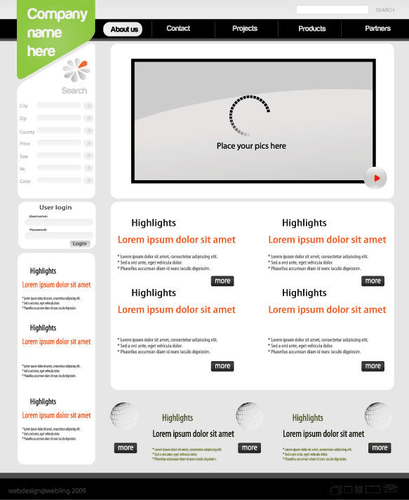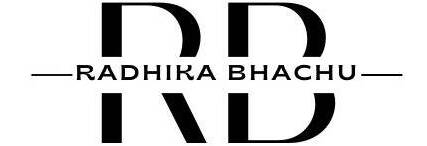
In the case of the farm investing in a new combine, it should deduct the full cost of the combine immediately. When applying this principle to inventories, companies should deduct the cost of a unit of inventory when it is acquired. In some instances, companies might be compelled to adjust prices to realign with inflation, affecting consumer behavior and market competitiveness. A delicate balance must be maintained to keep prices attractive while also addressing internal costs influenced by changing inventory values. When companies are evaluated for potential buyouts, the LIFO reserve is a critical factor in determining the true value of a company’s assets. By calculating the LIFO reserve, analysts can better understand a company’s profitability and sustainability.
Calculating LIFO Reserve in Dollar Value LIFO Method
- Current ratio is a widely used metric to analyze and compare the liquidity of companies.
- The LIFO Reserve is a tool used by companies to manage their inventory and cost of goods sold.
- There are several methods to use, and the ones impacting the LIFO reserves are FIFO and LIFO.
- Proper adjustments based on LIFO reserve calculations ensure that budgets closely reflect anticipated financial realities.
- On the other hand, a low LIFO reserve indicates that a company is using FIFO to maximize its tax liability.
- This account provides clarity by showing what inventory value would have been using FIFO accounting – often resulting in different figures for cost of goods sold and consequently, net income.
- One factor behind the decline of LIFO usage over time is the economy-wide shift away from goods and toward services.
In this section, we will explore how companies have successfully prevented profit erosion with LIFO reserve. The LIFO Reserve is an important accounting method that can significantly impact a company’s financial statements. It can help prevent profit erosion and provide protection against inflation, but it can also impact taxes and investor confidence. The best option for a company will depend on their specific circumstances, and it is important to carefully consider the pros and cons of each method before making a decision.
- The best option for a company to use regarding LIFO Reserve depends on the company’s specific circumstances and financial goals.
- When comparing lifo to other inventory valuation methods, such as fifo or average cost, it’s essential to consider the specific needs of the company.
- This approach affects reported profit margins by reducing net income when rising prices increase inventory costs.
- It enables organizations to adjust their budgeting processes and ensure accurate financial reporting while maintaining transparency for investors and stakeholders.
- Since the Dollar Value LIFO accounts for both price changes and quantity fluctuations, it provides a more meaningful basis for evaluating trends in sales, profitability, and efficiency over time.
- Calculating the LIFO reserve requires attention to detail and an understanding of inventory costs.
Journal Entry for LIFO Liquidation
This approach directly impacts the income statement by increasing the cost of goods sold and reducing reported net income. To properly analyze double declining balance depreciation method a company’s LIFO reserve, it is important to compare it to industry benchmarks and historical trends. This can provide insights into the company’s inventory management and the effectiveness of their accounting methods. It is also important to consider the impact of LIFO on the company’s financial statements and adjust analysis accordingly. Finally, investors and analysts should be aware of any potential distortions created by LIFO and adjust their analysis accordingly.

Beyond LIFO Reserve

Absence of LIFO under IFRS requires firms to adopt other inventory valuation methods, affecting how they calculate cost of goods sold and report remaining inventory. During periods of inflation, the LIFO method assigns a higher cost to inventory goods sold first. Companies gain tax savings and delay some tax liabilities, improving financial flexibility. There are several best practices that companies can follow to ensure that they are using LIFO reserve effectively. First, companies should regularly review their LIFO reserve account to ensure that it is accurate and up-to-date. Second, companies should monitor their inventory levels closely to prevent LIFO liquidation.

Introduction to LIFO Reserve and Financial Ratios
In periods characterized by rising prices, the LIFO method results in higher reported inventory costs than FIFO. Consequently, it leads to a reduction in cost of goods sold (COGS) and pre-tax earnings. This decrease in earnings translates into fewer taxes owed when reporting under the LIFO method. In contrast, internal reporting often utilizes the FIFO method, which reports lower costs and higher profits, making it more appealing to investors.
The balance sheet, income statement, cash flow statement, and other key financial ratios reflect the choice and impact stakeholders’ decisions. The LIFO reserve is an essential factor to consider when conducting financial analysis. Therefore, it is important to ensure that the LIFO reserve is consistent and reflects the company’s inventory management practices. Additionally, it is crucial to compare the advantages and disadvantages of LIFO and FIFO to determine the best method for a company’s needs. By considering the LIFO reserve, financial analysts can provide more accurate and comprehensive results to stakeholders. The LIFO Reserve is an accounting term that refers to the difference between inventory values calculated using the Last In, First Out (LIFO) method versus the First In, First Out (FIFO) method.
LIFO Reserve
Understanding how to calculate the LIFO reserve is crucial for businesses that employ the Last In, First Out (LIFO) accounting method. The LIFO reserve lifo reserve is the difference between the cost of inventory calculated using the LIFO method and another inventory costing method, often FIFO. This calculation helps companies discern the impact of their inventory valuation method on profit and tax liability. It is particularly important for financial reporting and strategic decision-making. Additionally, it helps to improve the overall financial reporting and budgeting processes for businesses.
LIFO Reserve Explained in Video
However, this leads to a discrepancy when comparing the financials of a company using LIFO with another one using FIFO or other inventory accounting methods. It is an account used to bridge the values of inventory accounting methods, allowing for better comparisons and more accurate financial analysis and reporting. From an accounting perspective, the LIFO reserve is important because it can have a substantial impact on a company’s reported earnings and tax liability. When prices are rising, LIFO accounting will typically report lower profits and, consequently, lower taxes than FIFO accounting. This is because the cost of goods sold (COGS) under LIFO reflects the most recent—and usually higher—inventory costs, reducing the reported net income.

The LIFO method assumes that the last inventory items purchased are the first ones sold, which means that the inventory’s cost of goods sold is based on the latest inventory purchases. Understanding lifo Inventory valuation is crucial for understanding a company’s financial statements, as it can have a significant impact on a company’s balance sheet. The Last-In, First-Out (LIFO) reserve is a crucial accounting concept https://www.bookstime.com/ that plays a significant role in the management and interpretation of a company’s balance sheet. This reserve represents the difference between the cost of inventory calculated using the lifo method and another inventory valuation method, typically the First-In, First-Out (FIFO) method.
Retroactive Taxation on LIFO Reserves
Investors often scrutinize the LIFO reserve to assess a company’s financial health and operational efficiency. A growing LIFO reserve might raise red flags, suggesting that the company is holding onto older inventory or that it may not be managing its stock effectively. Conversely, a stable or decreasing LIFO reserve could signal effective inventory management and a strong alignment between reported earnings and actual cash flows. These figures are essential as they directly impact the computation of the LIFO reserve. Consistency in maintaining these inventory records over time is crucial for accurate LIFO reserve tracking, which aids in financial analysis and comparison across different fiscal periods and accounting practices.

